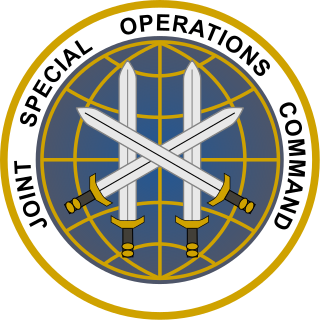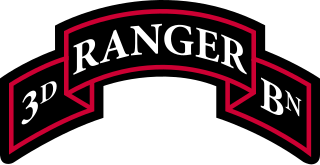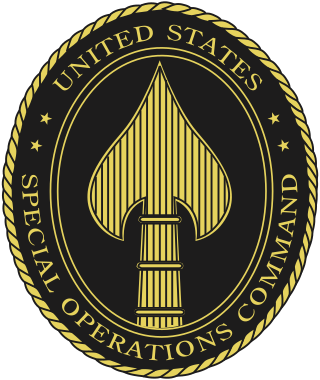
Operation Anaconda or the Battle of Shah-i-Kot was a military operation that took place in early March 2002 as part of the War in Afghanistan. CIA paramilitary officers, working with their allies, attempted to destroy al-Qaeda and Taliban forces. The operation took place in the Shah-i-Kot Valley and Arma Mountains southeast of Zormat. This operation was the first large-scale battle in the post-2001 War in Afghanistan since the Battle of Tora Bora in December 2001. This was the first operation in the Afghanistan theater to involve a large number of U.S. forces participating in direct combat activities.

The 1st Special Forces Operational Detachment–Delta, referred to as Delta Force, Combat Applications Group (CAG), or within Joint Special Operations Command (JSOC), Task Force Green, is a special operations force of the United States Army, under operational control of JSOC. The unit's missions primarily involve counterterrorism, hostage rescue, direct action, and special reconnaissance, often against high-value targets.

The 160th Special Operations Aviation Regiment (Airborne), abbreviated as 160th SOAR (A), is a special operations force of the United States Army that provides helicopter aviation support for special operations forces. Its missions have included attack, assault, and reconnaissance, and these missions are usually conducted at night, at high speeds, low altitudes, and on short notice.

The 75th Ranger Regiment, also known as the Army Rangers, is the premier light infantry unit of the United States Army. The 75th is also part of the United States Army Special Operations Command and the Department of Defense Joint Special Operations Command. The regiment is headquartered at Fort Moore, Georgia and is composed of a regimental headquarters company, a military intelligence battalion, a special troops battalion, and three Ranger battalions.

The United States Army Special Operations Command (Airborne) (USASOC ( YOO-sə-sok)) is the command charged with overseeing the various special operations forces of the United States Army. Headquartered at Fort Liberty, North Carolina, it is the largest component of the United States Special Operations Command. It is an Army Service Component Command. Its mission is to organize, train, educate, man, equip, fund, administer, mobilize, deploy and sustain Army special operations forces to successfully conduct worldwide special operations.

The Joint Special Operations Command (JSOC) is a joint component command of the United States Special Operations Command (USSOCOM) and is charged with studying special operations requirements and techniques to ensure interoperability and equipment standardization, to plan and conduct special operations exercises and training, to develop joint special operations tactics, and to execute special operations missions worldwide. It was established in 1980 on recommendation of Colonel Charlie Beckwith, in the aftermath of the failure of Operation Eagle Claw. It is headquartered at Pope Field.

The 3rd Ranger Battalion is the third of three Ranger Battalions belonging to the United States Army's 75th Ranger Regiment. It is currently based at Fort Moore, Georgia.

Shortly after the September 11 attacks, the United States declared the war on terror and subsequently led a multinational military operation against Taliban-ruled Afghanistan. The stated goal was to dismantle al-Qaeda, which had executed the attacks under the leadership of Osama bin Laden, and to deny Islamist militants a safe base of operations in Afghanistan by toppling the Taliban government. The United Kingdom was a key ally of the United States, offering support for military action from the start of the invasion preparations. The American military presence in Afghanistan greatly bolstered the Northern Alliance, which had been locked in a losing fight with the Taliban during the Afghan Civil War. Prior to the beginning of the United States' war effort, the Taliban had seized around 85% of Afghanistan's territory as well as the capital city of Kabul, effectively confining the Northern Alliance to Badakhshan Province and smaller surrounding areas. The American-led invasion on October 7, 2001, marked the first phase of what would become the 20-year-long War in Afghanistan.

Forward operating base (FOB) Rhino, also known as Camp Rhino, was a U.S. military base located in the Registan Desert of Afghanistan, 100 nautical miles (190 km) southwest of Kandahar. It was the first U.S. land base established in Afghanistan during Operation Enduring Freedom and was in use from November 2001 to January 2002.

The 24th Special Tactics Squadron is one of the Special Tactics units of the United States Air Force Special Operations Command (AFSOC). Garrisoned at Pope Field, North Carolina, it is the U.S. Air Force component of Joint Special Operations Command (JSOC). The unit's webpage describes it as "the Air Force's special operations ground force".
The Angur Ada raid was a covert raid conducted by American Commandos from JSOC against Taliban fighters on September 3, 2008, within the border town of Angur Ada in South Waziristan. It was the first time American Troops fought a ground-based battle against the Taliban within Pakistani borders. The raid took place at the same time as Pakistani military forces ended a four-week offensive in Bajaur, the northernmost Agency of the Federally Administered Tribal Areas of which South Waziristan is the southernmost, an offensive that has displaced approximately half a million people.

The Joint Special Operations Command Task Force which fought in the Iraq War was a joint U.S. and British special operations temporary grouping assembled from different units. It has been described as a "hunter-killer team" with its core made up of the United States Army's 1st Special Forces Operational Detachment-Delta and the 75th Ranger Regiment, as well as the United States Naval Special Warfare Development Group and members of the United States Air Force's 24th Special Tactics Squadron, all under Joint Special Operations Command (JSOC) and elements from the United Kingdom Special Forces, including the Special Air Service, Special Boat Service (SBS), Special Reconnaissance Regiment (SRR), 18 (UKSF) Signal Regiment and the Special Forces Support Group (SFSG). The task force was reported to be responsible for the cross border raid into Syria from Iraq in October 2008 that resulted in eight deaths including Abu Ghadiya, along with several US operations in the Horn of Africa targeting al-Qaeda.

The Fall of Kandahar took place in 2001 during the War in Afghanistan. After the fall of Mazar-i-Sharif, Kabul and Herat, Kandahar was the last major city under Taliban control. Kandahar was where the Taliban movement had originated and where its power base was located, so it was assumed that capturing Kandahar would be difficult. The city fell after several weeks of fighting to a force of local militia under Pashtun military commanders and their American advisers. The fall of Kandahar signaled the end of organized Taliban control of Afghanistan.
The Baraawe raid, code named Operation Celestial Balance, was a helicopter assault by United States Special Operations Forces against the al-Qaeda-linked terrorist Saleh Ali Saleh Nabhan and associated al-Shabaab militants near the town of Baraawe in southern Somalia.
The 2001 Bombing of Kandahar was a series of military operations conducted in and around Kandahar, Afghanistan, during October 2001, as part of the start of the United States' military operations in Afghanistan.

On 6 August 2011, a U.S. CH-47D Chinook military helicopter operating with the call sign Extortion 17 was shot down while transporting a Quick Reaction Force attempting to reinforce a Joint Special Operations Command unit of the 75th Ranger Regiment in the Tangi Valley in Maidan Wardak province, southwest of Kabul, Afghanistan.

The 75th Ranger Regiment's Regimental Reconnaissance Company is an elite special operations force that has been a member of Joint Special Operations Command (JSOC) since 2005. The unit is believed to have become part of JSOC due to its extensive training and unique capabilities to conduct special reconnaissance and close target reconnaissance (CTR) operations, and advanced force operations (AFO).

The United States Special Operations Command is the unified combatant command charged with overseeing the various special operations component commands of the Army, Marine Corps, Navy, and Air Force of the United States Armed Forces. The command is part of the Department of Defense and is the only unified combatant command created by an Act of Congress. USSOCOM is headquartered at MacDill Air Force Base in Tampa, Florida.
















